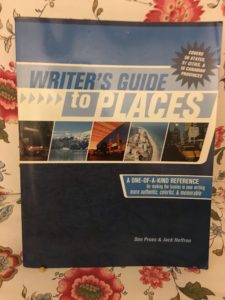The (Exclusionary) Writer’s Guide to Places
 I bought The Writers’ Guide to Places months ago at the Goodwill Quincy and I was excited about the promise the cover makes. The vagueness of that last word, places, should have warned me that disappointment would follow.
I bought The Writers’ Guide to Places months ago at the Goodwill Quincy and I was excited about the promise the cover makes. The vagueness of that last word, places, should have warned me that disappointment would follow.
First, it’s a very narrow list of places. In this book, the places covered are the fifty states of the United States of America and 10 provinces of Canada, so the book doesn’t even cover all of North America (Mexico is part of North America, in case you’re wondering) or all of the United States (Samoa, Guam, and Puerto Rico are part of the US and it’s important that we acknowledge that the US is still colonizing land).
Second, as if that first point wasn’t a clue, it’s exclusionary. This serial fiction experiment I’m writing is set in New Orleans but has deep roots in the Sea Islands off the coast of South Carolina. Having never lived in New Orleans or the Sea Islands of South Carolina, I was hoping this book would help me out. It was a little helpful with book recommendations, but otherwise it was aggravating to read that my Black characters would be proud of South Carolina’s plantations and would love the Confederate flag. I have never met a black person, of slave descent or no, that thought plantations where their ancestors or people that could have been their ancestors were held captive, denied basic human rights, and forced to work for free (while being called lazy) were a thing to take pride in. And I have yet to meet a Black person that loves the Confederate flag. Every single time I saw a Confederate flag waving in the breeze the Billie Holliday singing Strange Fruit came to mind.
Lastly, I would like to offer my services to update this book. It’d be great to make it an online resource or database for writers. This has the potential to be a great resource that can easily be made inclusive with a little forethought, organization, and planning; all things I’m good at.
